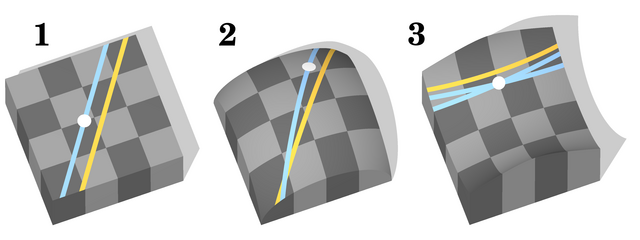Top Qs
Timeline
Chat
Perspective
Ambient space (mathematics)
Space surrounding an object From Wikipedia, the free encyclopedia
Remove ads
In mathematics, especially in geometry and topology, an ambient space is the space surrounding a mathematical object along with the object itself. For example, a 1-dimensional line may be studied in isolation —in which case the ambient space of is the real line, or it may be studied as an object embedded in 2-dimensional Euclidean space —in which case the ambient space of is , or as an object embedded in 2-dimensional hyperbolic space —in which case the ambient space of is . To see why this makes a difference, consider the statement "Parallel lines never intersect." This is true if the ambient space is , but false if the ambient space is , because the geometric properties of are different from the geometric properties of . All spaces are subsets of their ambient space.
This article includes a list of references, related reading, or external links, but its sources remain unclear because it lacks inline citations. (May 2024) |

Remove ads
See also
Further reading
- Schilders, W. H. A.; ter Maten, E. J. W.; Ciarlet, Philippe G. (2005). Numerical Methods in Electromagnetics. Vol. Special Volume. Elsevier. pp. 120ff. ISBN 0-444-51375-2.
- Wiggins, Stephen (1992). Chaotic Transport in Dynamical Systems. Berlin: Springer. pp. 209ff. ISBN 3-540-97522-5.
Wikiwand - on
Seamless Wikipedia browsing. On steroids.
Remove ads






